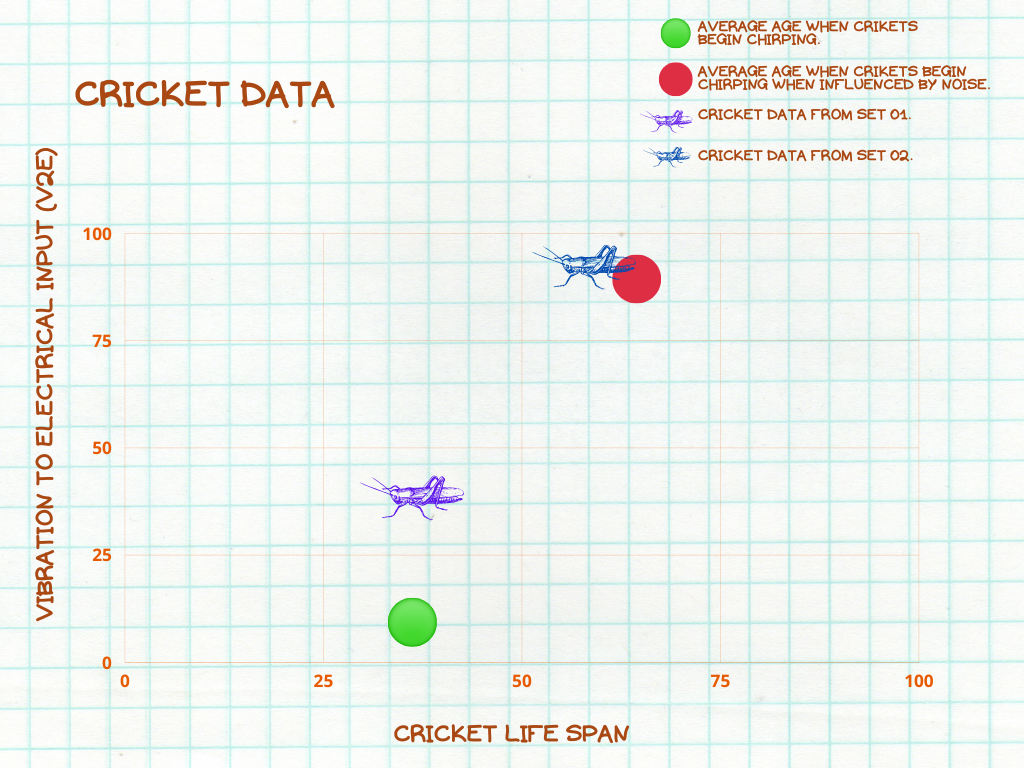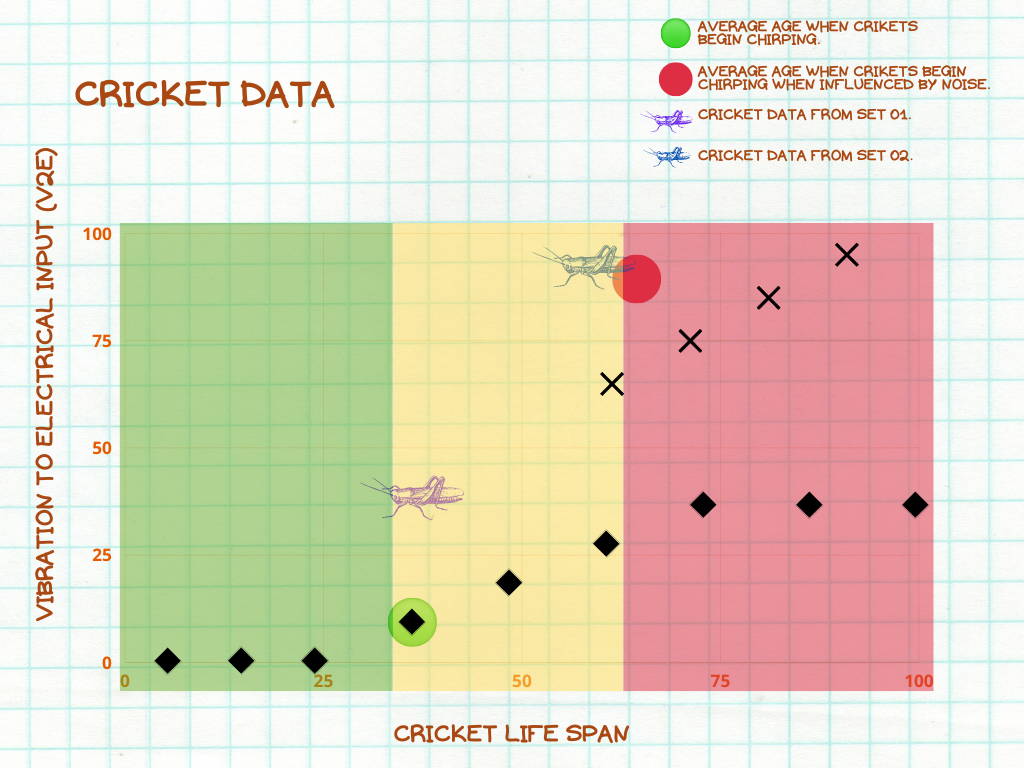
Noise Pollution
CRICKET research
The Research Report is readily available for your view through LinkedIn or via the below text. We recommend that you view and subscribe to the Journey To Earth Newsletter on LinkedIn for regular updates on our latest research and news.
This research examines evolutionary adaptation and the toll that human pollution burdens upon other living species. I will focus attention to crickets who will be our focal point for this study. I am excited to help other researchers in parallel with their own research project. I will lightly talk about that during this expedition. I must gather data from different environments to have analyzed. This will include remote wilderness with no known human influence, rural, and city locations. I will use satellite and LiDAR technology to look back at ancient human influence and how that has shaped nature. The journey begins now.
The following log provides daily entries into this research expedition.
Day 1
Today was half success and half failure. In order to gather the data I need, using an available system is not an option. I must develop one that can gather my data and do so in adventurous terrain. Data integrity is very important as I need quality results. I will use a circuit and microphone to input my data that will feed into a microprocessor. I first build the housing unit that will store the audio microphone. This is simple enough. My first success. Now I must create an application that can read and process this data. To do this, I will use C++, a computer programming language. This is where I encounter my first roadblock. The code appears to function at first, but then crashes. Something is not working right. I realized long ago that in technology, starting with a new set of eyes the following day is sometimes the best approach. That is what I decide upon.
Day 2 & 3
I was excited when the code changes made stopped the application from crashing. As I continued to test, I found that the data was not consistent. Data integrity is always important during research. It is because of this that I made the decision to go back to the drawing board and rewrite the code. I know that in order for me to get this code exactly right, it would take a few days. To take full advantage of time, I decide to work on another research area in parallel. This research will study cricket sperm. Have you ever truly considered the effects of urbanization. Think of it like this. A healthy, lush forest is cut down to allow for a city to be built. When this happens all types of external stimuli take shape to include noise and light pollution. The question becomes, how does this effect other living species. The area that we will specifically look at is how noise pollution affects reproduction. Cricket sperm will be analyzed for crickets that live in different noise frequency locations. Often with large scale research, having numerous teams focus on specific topics will help prevent overload of the mind. This area of study is where I will be helping other researchers. The cricket sperm has special properties that allow for the identification of live versus dead sperm. As seen in the images below, green identifies live, while red indicates dead sperm. To help speed the analysis process, technology is used. If humans were to attempt analysis of this data, the project would go on far too long. A machine learning model has been created that trains a computer to identify the exact search parameters and can do so in seconds. The first step in this process is to have a human identify live versus dead. This will then be shared with the computer. The algorithm will then begin a learning process utilizing back propagation. This is important because errors are taken back to the beginning and applied for all future use. After roughly 10 cycles, the accuracy is above 98%. Understand though that per cycle, millions of data points are analyzed.


Day 4
What effect does urbanization have on living species. Another great way to study this is by analyzing living species in the setting they live in. With crickets, I will obtain and analyze stridulation samples. Male crickets will rub their forewings together to make chirping sounds as part of a matting process. This is how males attract females. With each location I visited, the environment and parameters were closely monitored and matched. This was completed to reduce as much noise as possible and strengthen data integrity. Something that is important to me is sharing each research and experience. To the first location, I am accompanied by my son and sister. We travel into a lively forest that has been semi influenced by humans. Studies tell us that Indians would travel into this area before it was settled. They would travel down off the mountains to hunt, fish and gather supplies. Knowing where they setup is important. We also need to account for the average outdoor enthusiast who may have hiked into the area. Using overhead imagery technology and aging the trees, I identified the most probable location where the Indians setup camp. This helped confirm that the area was not largely impacted by human pollution. After setting up the system, I powered it on and immediately started to gather data. Sitting in absolute silence, we listened to the crickets. It is moments like this that really remind you how much urbanization can impact some of the most simple things that we take for granted.
Day 5
Now to choose an area largely impacted by human pollution. I narrowed the decision down into two locations. The first, a large city, and the second being a large suburban community. To avoid unwanted back noise, I choose the community. For well over 20 years, this community has remained thriving. The average life span of a cricket is 90 days. This means that roughly 81 generations of crickets would have been raised in an area impacted by noise pollution. We know that crickets, just like other living species have adapted their DNA to survive. Have they adapted to live amongst noise pollution? I’ll explain a very interesting case study regarding crickets adapting their DNA here in just a few minutes. Just like before, I power on the equipment and begin gathering data. I observe something different here. It is almost as though the crickets sound louder. I’ll be interested to see what the data tells us.
Day 6
Past studies tell us something really interesting. Crickets that are born and raised in areas of noise pollution experience delays in when they begin chirping. This means that their reproduction process is delayed. When we layer our field data on top of that, things really start to make sense. The crickets that have the highest exposure to noise pollution emit the loudest chirping song when attempting to attract a female. This would signify that noise pollution does negatively impact crickets. Reference the graphs below for a visual representation. An average cricket that is not subjected to noise pollution will begin chirping at around day 35. This is indicated by the green circle. The red circle shows how this is delayed by nearly 200% when a cricket is exposed to noise pollution. Set 01 is from a location that was minimally impacted by humans and Set 2 is with a large amount of noise pollution. In the second graph, diamonds represent crickets that are not exposed to noise pollution. Note how much earlier they begin to find a matting partner. X’s indicate exposure to noise pollution, therefore producing delayed response. This data is vital to bring awareness around the importance of noise pollution when engaged in urbanization. Future studies are needed to understand how other living species to include humans are impacted. Now this topic deserves its own research study as well and it will eventually get one. I’m talking about light pollution. I was interested to see if there was anything even worth studying. My question was how much impact can one light bulb have on living species. What we know is that a 40 watt bulb can produce 450 lumens. Now there are a number of external factors that can impact the distant one may be able to see a single lightbulb at night. What our early studies have found is that on a relatively good night the human eye can see a light bulb at a distance of around 60 miles away. Now that is just one lightbulb. There has been a large number of studies in the past that have successfully showed us that light pollution can dramatically impact earths ecosystem. Many living species for as long as we know have relied upon the routine rhythm of day and night. Nocturnal species live through the night and many use it as a way to migrate. Think about a sea turtle and how artificial light can confuse newly born turtles. With a few changes, our ecosystem as we know it today could be completely altered. Light pollution undoubtedly has a big impact. Capturing, documenting, and sharing experiences like this are important. Be sure to check out a unique art collection piece that was created during this research project. The art piece captures a defining moment when a light bulb emits light into the world. It is titled, The Power of Light and will be made available soon. It is exclusively available on an online art platform. Only 10 exist in the world. All proceeds support our Journey To Earth children’s explorer magazine that is donated to children hospitals and schools.


